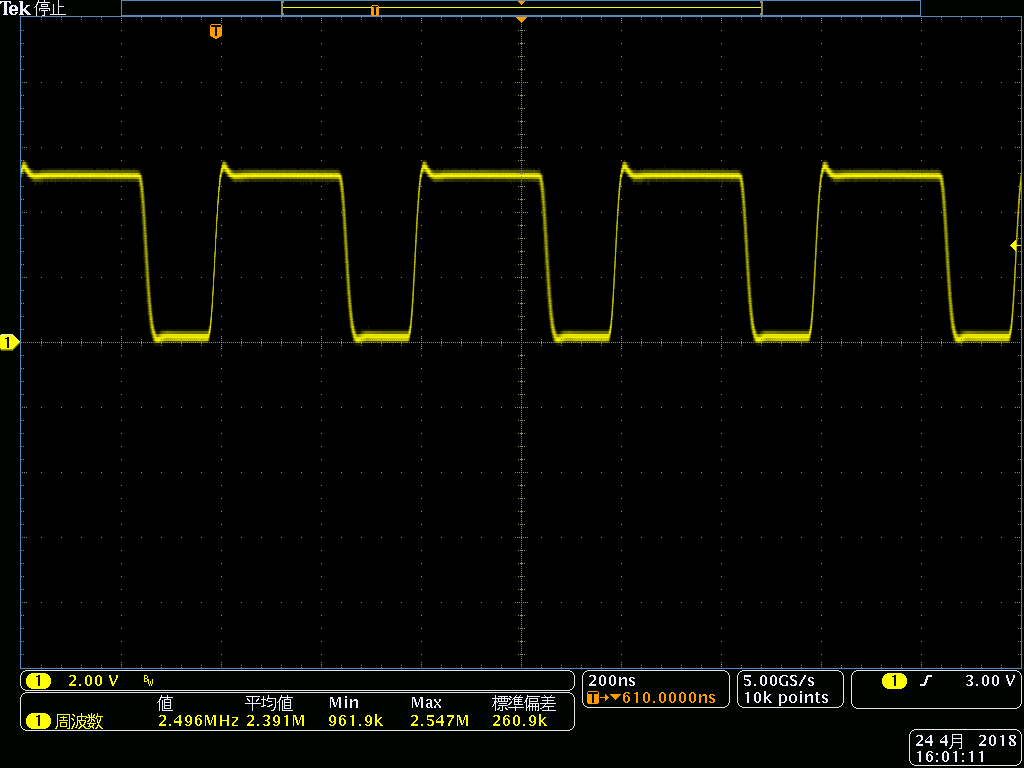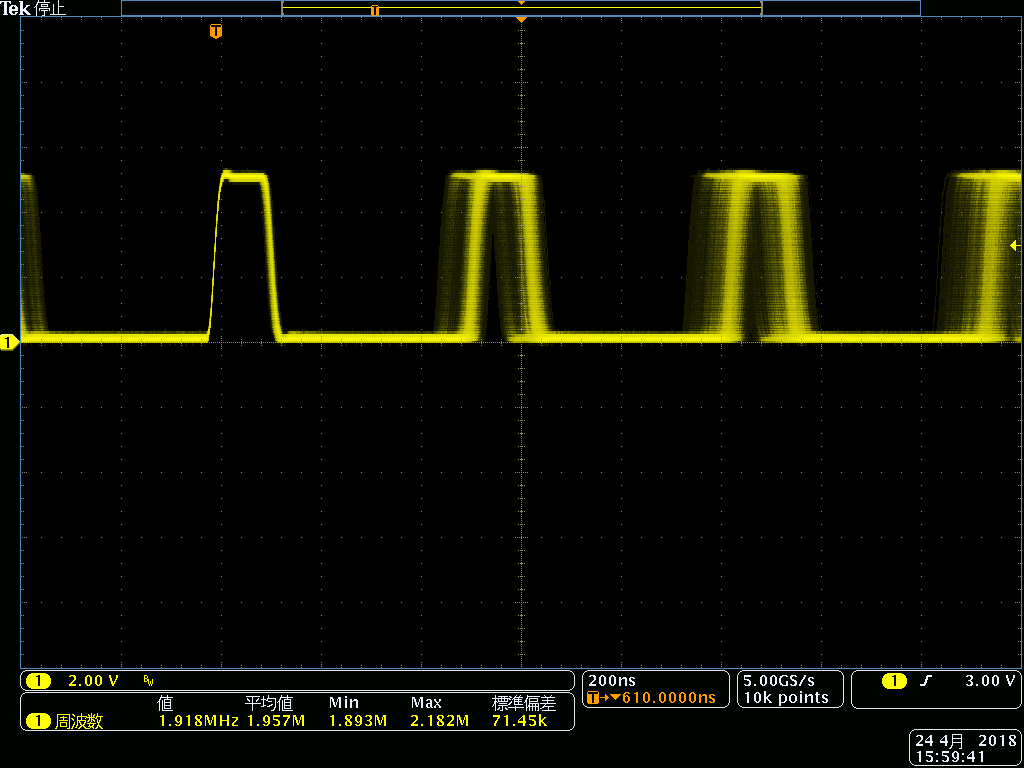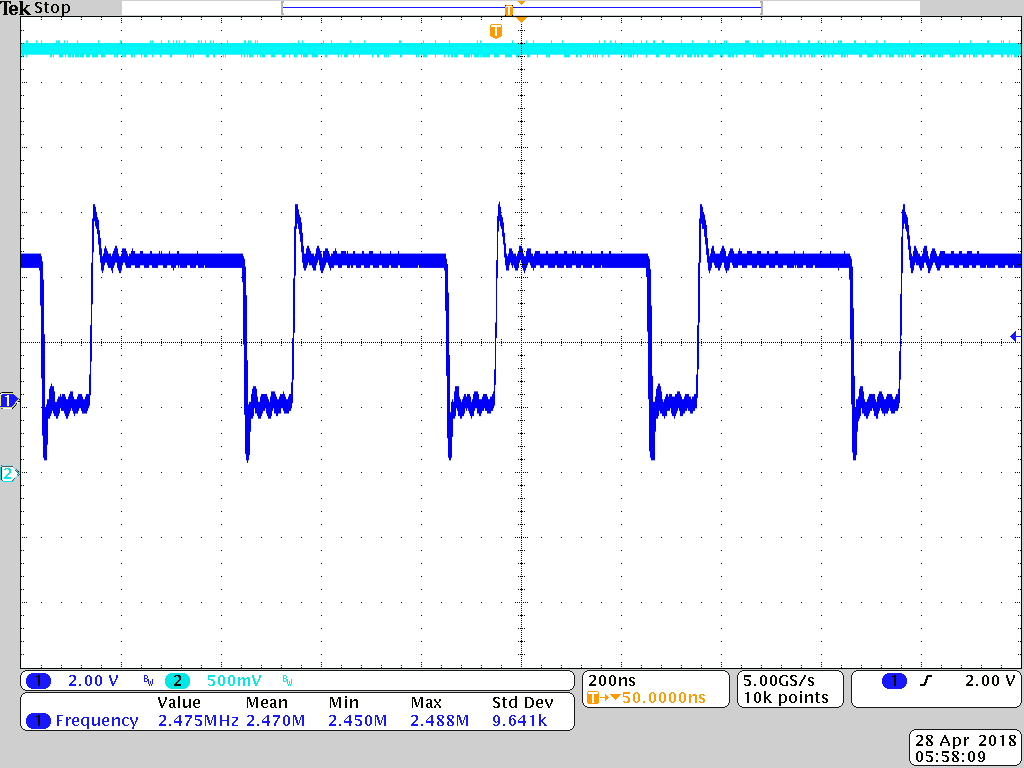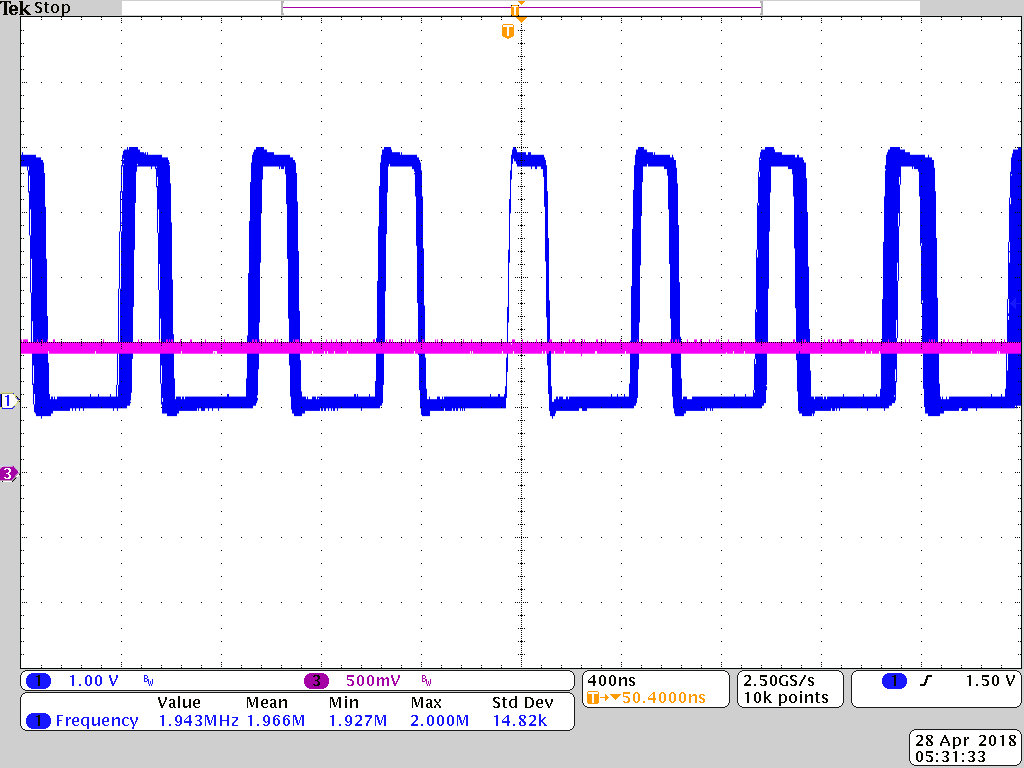Hello all,
I measured switching frequency on DCDC1 ,2 and 3 of TPS65218 by using osciloscope.
It wasn't stable. These frequency were 2MHz +/- 0.2MHz. It's look like jitter or spred spectrum.
Is it correct behavior? DCDC1,2 and were Forced PWM setting. But DCDC4 is stable frequency.
If correct behavior, Why is it? Can I disable it?
Best Regards.,
M.Iwasaki





